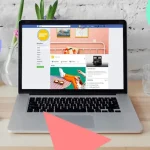In a world where digital visibility can make or break a business, Facebook marketing remains one of the most effective and affordable ways for small businesses to grow their brand, connect with customers, and drive free traffic.
With over 3 billion monthly active users, Facebook (now part of Meta) gives small businesses an opportunity to compete with bigger brands – not by outspending them, but by outsmarting them with the right strategy.
Whether you’re just starting out or looking to level up your Facebook game, this guide will walk you through everything you need to know to leverage Facebook marketing for sustainable business growth – without breaking the bank.
Also Read
Why Facebook Still Matters for Small Businesses
Despite the rise of Instagram, TikTok, and LinkedIn, Facebook remains a must-have marketing channel. Here’s why:
- Massive user base: Everyone from Gen Z to Baby Boomers uses Facebook – that’s billions of potential customers.
- Hyper-targeted marketing: Facebook’s ad tools let you reach people by location, age, interests, and behavior.
- Cost-effective reach: Organic and paid content can work together to get your brand in front of the right audience – even on a small budget.
- Trust & social proof: A well-maintained Facebook Page builds credibility, especially when supported by engagement, reviews, and recommendations.
In short, Facebook is not just for visibility – it’s a powerful platform for building authority, generating leads, and driving traffic to your site.
Step 1: Set Up and Optimize Your Facebook Business Page
Before diving into content and promotions, you need a solid foundation – your Facebook Business Page.
Here’s what to optimize:
- Profile picture: Use your logo or a professional brand image.
- Cover photo: Add a visually appealing header that communicates your value or current promotion.
- About section: Write a compelling summary with key details – what you offer, who you serve, and how people can contact you.
- Call-to-Action (CTA) button: Set this to “Shop Now,” “Book Now,” “Contact Us,” or whatever aligns with your goal.
- Custom username: Make your URL easy to share (e.g.,
facebook.com/YourBrandName).
Tips: Use keywords in your Page name and About section to improve search visibility on and off Facebook.
Step 2: Share Engaging, Value-Driven Content Consistently
Content is the heart of any social media strategy. To attract followers and drive traffic, you need to create content that informs, entertains, or solves a problem.
What to post:
- Educational content: Tips, how-to guides, infographics, FAQs.
- Behind-the-scenes: Show your process, team, or workspace.
- Promotions: Discounts, limited-time offers, and product launches.
- User-generated content (UGC): Share testimonials, reviews, or photos from customers.
- Live videos or Reels: Use short-form video to introduce your brand, show product demos, or answer questions in real time.
Posting Tips:
- Aim for 3–5 posts per week.
- Use Facebook’s scheduling tool to plan ahead.
- Mix content types (images, videos, text, polls, etc.) to keep your feed dynamic.
The goal: Keep your audience engaged so they like, comment, and share – increasing your organic reach.
Step 3: Grow Your Page Likes and Followers (Organically and Smartly)
Having a larger, engaged following increases your credibility and boosts your content’s visibility.
Strategies to grow your audience:
- Invite friends, customers, and email subscribers to follow your Page.
- Add “Follow Us on Facebook” links on your website, blog, and email footer.
- Promote your Page on your Instagram, Twitter, LinkedIn, and YouTube profiles.
- Run contests or giveaways that require Page likes or shares for entry.
- Use hashtags strategically to improve discoverability (e.g., #SmallBusiness, #YourCityName, #YourProductCategory).
Avoid buying fake likes – they won’t engage and can damage your reach.
Step 4: Engage With Your Audience and Build Community
Facebook isn’t just a broadcasting tool – it’s a platform for two-way conversations.
How to engage effectively:
- Respond to comments and messages promptly.
- React and reply to reviews – especially the negative ones, professionally.
- Ask questions to spark conversations.
- Create polls or quizzes to make your followers feel involved.
- Host live sessions or Q&A events.
The Facebook algorithm rewards engagement – the more people interact with your posts, the more their friends see your Page.
Step 5: Integrate Facebook Into Your Website and Other Channels
Maximize your reach by connecting your Facebook presence across all your digital assets.
Ways to integrate:
- Add a Facebook Like or Share button to your blog posts and product pages.
- Embed a Facebook Page widget in your website’s sidebar or footer.
- Include a Facebook “Follow” button in your email campaigns.
- Share your Facebook content on other social platforms.
- Use Meta Pixel to track website visitors and retarget them with ads.
The goal is to create multiple touchpoints that lead people back to your Page.
Step 6: Monitor Insights and Optimize Your Strategy
Facebook provides detailed analytics to help you understand what’s working – and what’s not.
Key metrics to track:
- Post Reach: How many people see your content?
- Engagement Rate: Are people interacting with your posts?
- Page Likes/Follower Growth: Is your audience expanding?
- Click-Through Rate (CTR): Are people clicking your links?
- Conversions: Are visitors taking action (buying, signing up, etc.)?
Use Meta Business Suite or third-party tools like Buffer and Hootsuite to track performance and adjust your content strategy accordingly.
Step 7: Use Facebook Ads to Accelerate Growth
Once your Page is active and optimized, consider investing in Facebook Ads to reach a larger or more targeted audience.
Types of Facebook Ads:
- Boosted posts: Promote your top-performing content.
- Page Likes campaigns: Attract new followers in your niche.
- Traffic or Conversion ads: Send people to your website or product pages.
- Retargeting ads: Re-engage people who visited your site but didn’t convert.
Start small (even $5/day), define your target audience, and test different creatives to find what works best.
Facebook’s ad targeting is powerful – you can reach the exact people who are most likely to become customers.
Tips for Long-Term Facebook Marketing Success
- Stay authentic: People connect with real brands, not robotic posts.
- Be responsive: Social media is a conversation, not a monologue.
- Avoid spammy behavior: Too much promotion can lead to unfollows.
- Repurpose content: Turn blog posts into infographics or video snippets.
- Stay updated: Facebook’s algorithm and features evolve – keep learning.
Facebook marketing doesn’t have to be overwhelming. With the right strategy, you can turn your Page into a lead generator, traffic booster, and brand-building powerhouse.
To recap:
- Start with an optimized Facebook Page
- Share consistent, valuable content
- Engage meaningfully with your audience
- Leverage integrations and cross-promotion
- Use ads strategically for faster results
- Track performance and keep refining your approach
Whether you’re promoting products, sharing stories, or simply connecting with customers – Facebook is still one of the best free traffic sources for small businesses.













